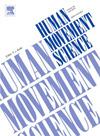Sensory conflicts through short, discrete visual input manipulations: Identification of balance responses to varied input characteristics
Abstract
Human balance control relies on various sensory modalities, and conflict of sensory input may result in postural instability. Virtual reality (VR) technology allows to train balance under conflicting sensory information by decoupling visual from somatosensory and vestibular systems, creating additional demands on sensory reweighting for balance control. However, there is no metric for the design of visual input manipulations that can induce persistent sensory conflicts to perturb balance. This limits the possibilities to generate sustained sensory reweighting processes and design well-defined training approaches. This study aimed to investigate the effects that different onset characteristics, amplitudes and velocities of visual input manipulations may have on balance control and their ability to create persistent balance responses. Twenty-four young adults were recruited for the study. The VR was provided using a state-of-the-art head-mounted display and balance was challenged in two experiments by rotations of the visual scene in the frontal plane with scaled constellations of trajectories, amplitudes and velocities. Mean center of pressure speed was recorded and revealed to be greater when the visual input manipulation had an abrupt onset compared to a smooth onset. Furthermore, the balance response was greatest and most persistent when stimulus velocity was low and stimulus amplitude was large. These findings show clear dissociation in the state of the postural system for abrupt and smooth visual manipulation onsets with no indication of short-term adaption to abrupt manipulations with slow stimulus velocity. This augments our understanding of how conflicting visual information affect balance responses and could help to optimize the conceptualization of training and rehabilitation interventions.

 求助内容:
求助内容: 应助结果提醒方式:
应助结果提醒方式:


